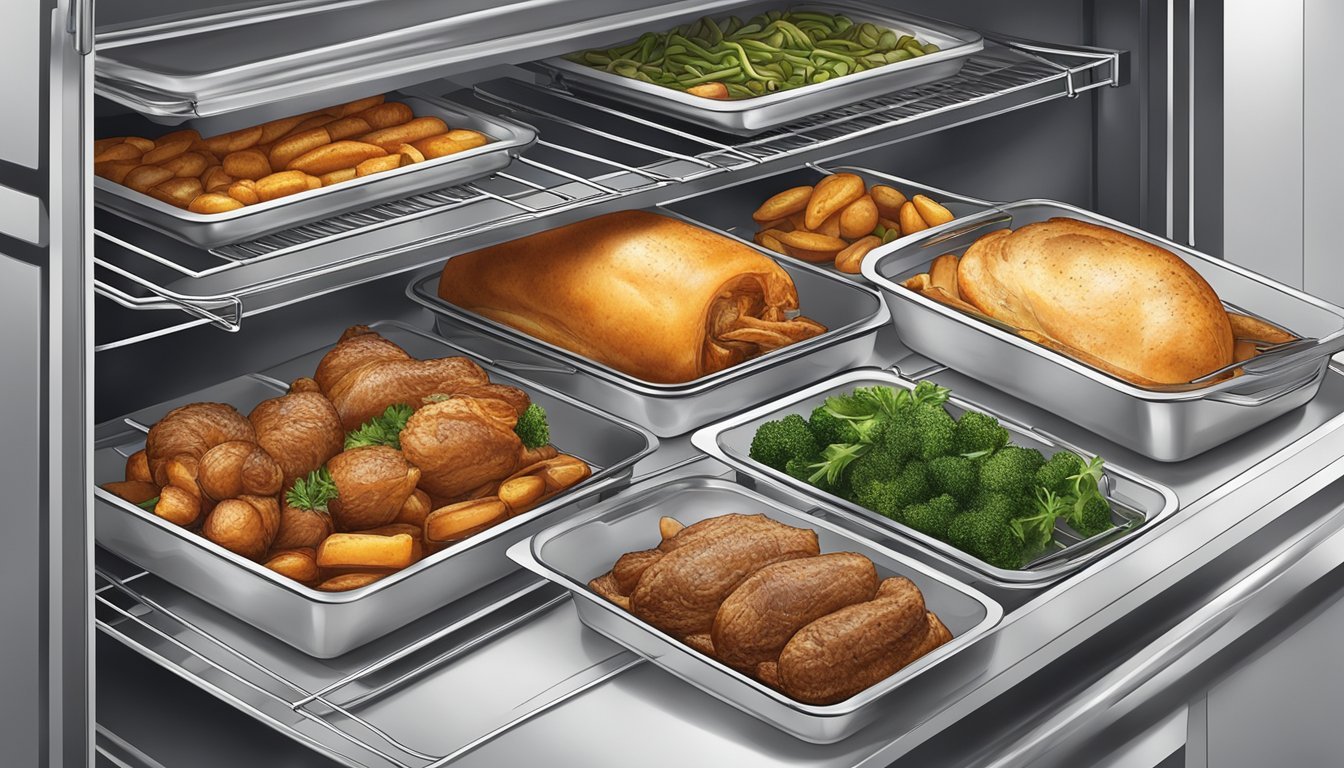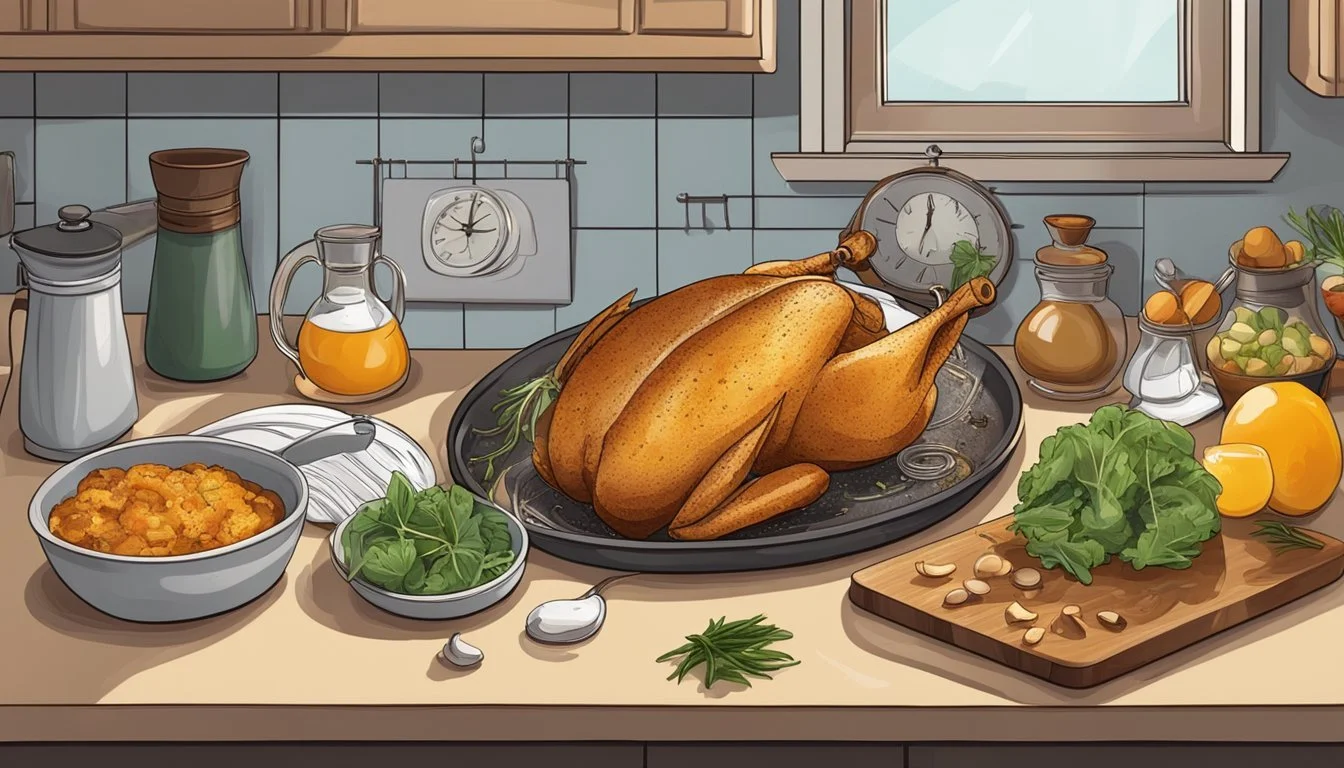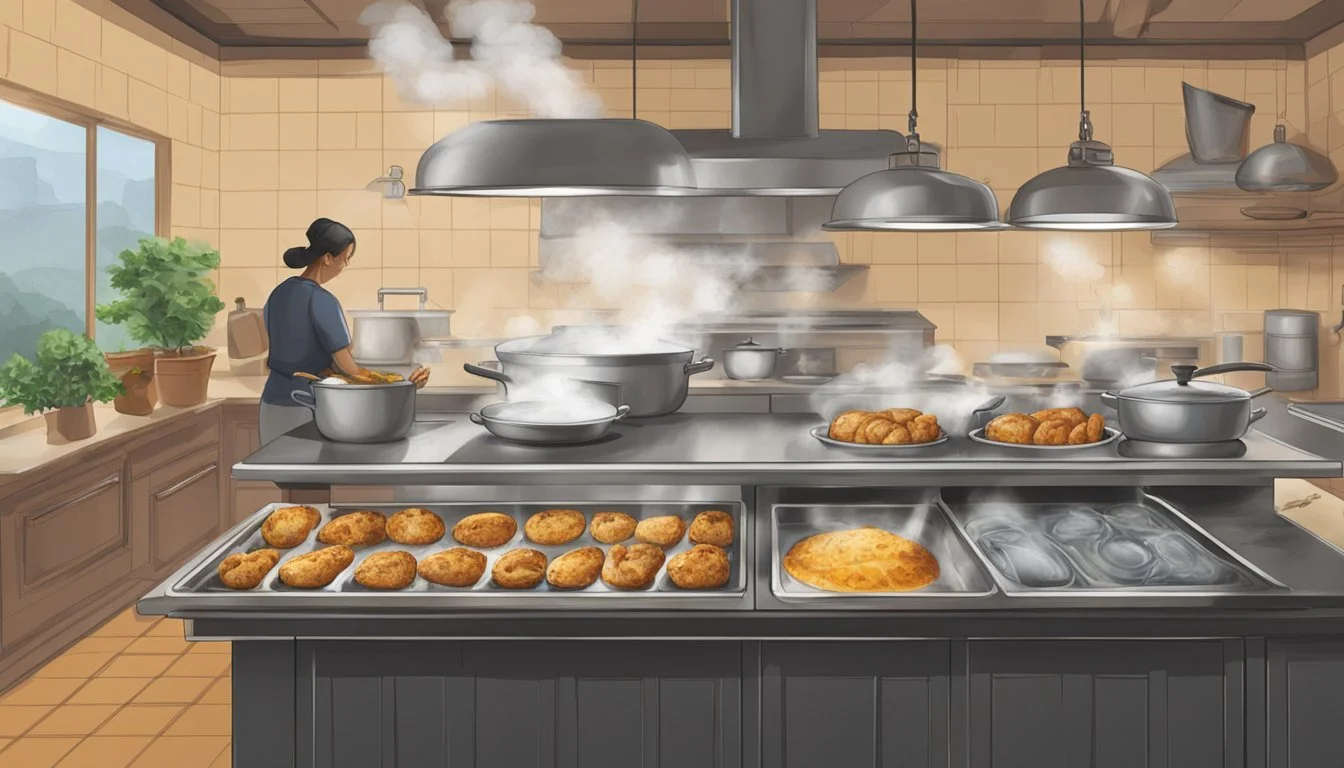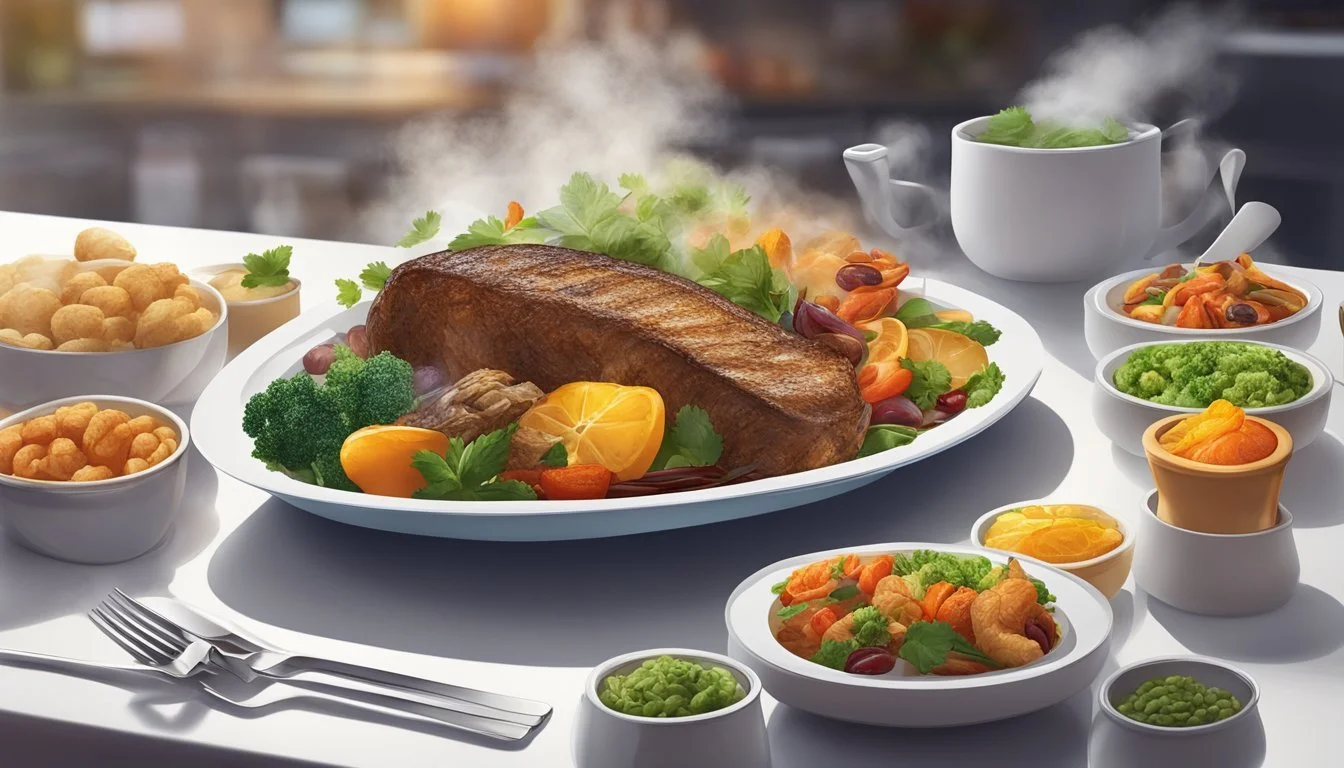How Long Do Freshly Prepared Roast Dishes Last?
Shelf Life and Storage Tips
When it comes to freshly prepared roast dishes, understanding their shelf life is essential for both food safety and quality. Roast dishes, whether beef, chicken, or vegetables, are a hearty option for family dinners and gatherings. The key to preserving their freshness and preventing foodborne illness lies in proper storage and timely consumption. Generally, a freshly roasted dish can last in the refrigerator for 3 to 4 days if it's promptly refrigerated after cooking. It's important that these dishes are stored in airtight containers to minimize exposure to air and bacteria.
Temperature control is critical in prolonging the life of freshly prepared roasts. Once the dish has cooled to room temperature, ideally within two hours of cooking, it should be placed in the refrigerator. On hot days, where temperatures soar above 90 degrees Fahrenheit, this window reduces to just one hour to reduce the risk of bacterial growth. For those interested in longer-term storage, freezing roast dishes is an option, which can significantly extend their safe consumption period and is perfect for meal planning and reducing waste.
When reheating leftovers, it is essential to ensure that the food reaches an internal temperature of 165 degrees Fahrenheit to eliminate any potential harmful bacteria. By adhering to these guidelines, one can enjoy roast dishes with the confidence that they are consuming food that is not only delicious but also safe.
Understanding Food Safety
When it comes to food safety, the primary concern is the prevention of foodborne illnesses caused by harmful bacteria. Proper storage and understanding of bacterial behavior are critical.
Bacteria and Food Poisoning
Harmful bacteria are the main culprits behind food poisoning. They can proliferate in food, especially when it's not stored correctly. Pathogenic bacteria can cause disease, while spoilage bacteria can degrade food quality, making it unsuitable for consumption.
Danger Zone and Bacterial Growth
The "Danger Zone" refers to temperatures between 40°F and 140°F (4°C and 60°C). In this range, bacterial growth in food accelerates, potentially reaching dangerous levels. Freshly prepared roast dishes, if left within this zone for over two hours, are at risk for rapid bacterial growth.
USDA Guidelines and Storage Practices
The United States Department of Agriculture (USDA) advises consuming or refrigerating cooked leftovers within 3 to 4 days to minimize the risk of foodborne illness. Proper storage involves maintaining a refrigerator temperature below 40°F and a freezer temperature at 0°F or below.
Food Safety Terms
It’s important to be familiar with food safety terms. "Use-by" dates indicate the last day the product is likely to maintain peak quality when stored properly. Knowing this helps determine safe consumption periods for roasted dishes (What wine goes well with roasted dishes?) and other perishables.
General Shelf Life of Roast Dishes
The shelf life of roast dishes varies depending on the type of meat and storage conditions. Ensuring proper refrigeration is crucial to maintaining food safety and preventing food poisoning.
Beef Roast
A refrigerated beef roast usually remains safe to consume for 3-5 days. When frozen, its shelf life extends to 6 months. It is crucial to store the beef in an airtight container or tightly wrap it in plastic wrap to maintain its quality.
Chicken and Turkey
Poultry such as chicken and turkey should be consumed within 1-2 days when refrigerated. In the freezer, these dishes retain their quality for approximately 4 months. Always maintain a consistent temperature to reduce the risk of bacterial growth.
Pork and Ham
Refrigerated roast pork and ham have a shelf life of around 3-4 days. If frozen, they can last up to 2 months. Proper storage includes using airtight containers or heavy-duty freezer bags to preserve freshness.
General Meat Storage Tips
Store meat at a temperature below 40°F (4°C) to prevent bacterial growth.
Use shallow containers to allow for rapid, even cooling, which is key to extending shelf life.
Never leave roast dishes at room temperature for more than 2 hours, as this increases the risk of food poisoning.
Consume leftovers promptly to enjoy the best flavor and quality.
Storing Roast Dishes Properly
Proper storage of roast dishes is crucial for extending their freshness and ensuring safety. By following specific guidelines for refrigerator and freezer storage, and by using airtight containers, one can significantly influence the shelf life of these dishes.
Refrigerator Guidelines
To maintain the quality of roast dishes, they should be stored in the refrigerator at a consistent temperature of 40°F (4°C) or below. After cooking, roast dishes need to cool to this temperature as quickly as possible to prevent bacterial growth.
Cooling Time: Aim to refrigerate roast dishes within two hours after cooking.
Portioning: Divide large quantities into smaller portions to cool faster and to facilitate reheating.
Labeling: Use labels with the date of storage to track freshness and ensure consumption within the optimal time frame.
Freezer Recommendations
When storing roast dishes in the freezer, the goal is to preserve their taste and texture while preventing freezer burn.
Temperature: Maintain a freezer temperature of 0°F (-18°C) or lower.
Wrapping: For best results, wrap portions in plastic wrap, followed by aluminum foil, or store in freezer-specific plastic bags.
Thawing: Always thaw frozen roast in the refrigerator to ensure safe and even thawing.
Airtight Containers for Longevity
Using airtight containers is essential for prolonging the shelf life of roast dishes in both the refrigerator and freezer.
Oxygen Exposure: Limiting exposure to air reduces the risk of spoilage and maintains quality.
Containers: Choose containers that are designed for storage, with strong seals to prevent leaks and odors.
By strictly adhering to these storage principles, one can ensure the safety and quality of their roast dishes for future enjoyment.
Recognizing Spoilage
In the context of roast dishes, recognizing spoilage involves observing changes in appearance, texture, and odor. These indicators are critical for safe consumption.
Appearance and Texture Changes
Changes in appearance and texture are often the first noticeable signs of spoilage. A fresh roast should have a firm texture and be moist but not slimy. If the texture becomes mushy or the surface develops a sticky or slimy film, the meat is likely spoiled and should not be eaten.
Smell and Odor as Indicators
The smell of a roast dish can be a reliable indicator of its freshness. Roast that has gone bad will emit a foul odor, which may resemble sourness or the smell of ammonia. Even before these strong odors develop, any unpleasant or off-odors can be a sign that the roast should not be consumed.
Food Gone Bad: Color and Mold
Discerning spoilage by color involves noticing any significant changes from the roast's natural hues. If the meat exhibits any unnatural colors such as greenish or grayish tones, it indicates spoilage. The presence of mold, which can be green, black, or white fuzzy spots, confirms that the food has gone bad and should be discarded.
Special Considerations for Prepared Foods
Understanding the longevity of prepared foods is crucial for health and safety. This section provides specific guidelines for various categories of prepared dishes.
Prepared Foods and Leftovers
Prepared foods, including roast dishes, casseroles, and stews, should be consumed within 3-4 days when stored in a refrigerator at or below 40°F. Leftover cooked chicken has a refrigeration window of 2-4 days before it risks quality and safety. Foods with high moisture content, like soup, can harbor bacteria if not stored properly, and should adhere to this timeline.
Rice and Pasta: Last up to 5 days refrigerated.
Salads: Tossed salads can last up to 5 days, but if dressed or containing cut fruit, consume within a day.
Sauces: Homemade or repurposed sauces are best used within 4 days.
Dairy, Eggs, and Pasta
Dairy products, like cheese, are safe to consume until visible mold appears or the product smells off, typically lasting up to two weeks. Cooked eggs, including those in dishes like quiche, should be eaten within 1 week. For pasta, one should particularly note any changes in texture or smell as signs that the food should no longer be eaten.
Dairy Products: Cheese (up to 2 weeks), Milk (within a week of the open date)
Eggs: Hard-boiled eggs have a shelf life of about one week.
Pasta: Can be kept for 3-5 days in the fridge.
Baked Goods and Desserts
Baked goods such as rolls and pies generally stay fresh for about 2 days at room temperature, but can last up to 5-7 days when refrigerated. Desserts should be consumed relatively quickly, as they may contain perishable ingredients that spoil.
Rolls and Bread-based Items: Best within 2-3 days on the counter, 5-7 days refrigerated.
Pies and Pastries: Fruit pies can last up to 2 days at room temperature, 4-5 days refrigerated.
Each category of prepared food requires careful monitoring for spoilage signs such as off odors, flavors, or visual changes. Always practice safe food handling, such as maintaining proper storage temperatures and using clean utensils to prevent cross-contamination.
Freezing and Thawing Techniques
Proper freezing and thawing techniques are essential to ensure the longevity and safety of prepared roast dishes. These methods not only protect the food from spoilage but also maintain its quality.
Freezing Basics
When freezing a prepared roast, one must wrap the meat to prevent freezer burn and dehydration. It's recommended to:
Allow the roast to cool completely before freezing.
Wrap the roast tightly in plastic wrap or aluminum foil, ensuring no part is exposed to air.
Label the package with the freezing date and place it in the freezer.
A roast can be safely stored in the freezer for up to three to six months for optimal quality.
Safe Thawing Processes
Thawing a frozen roast must be done with care to minimize the risk of bacterial growth. The following are safe methods:
Refrigerator Thawing: Transfer the frozen roast to the refrigerated section, allowing it to thaw slowly. This can take several hours to a full day, depending on the size of the roast.
Cold Water Thawing: For a quicker option, submerge the wrapped roast in a bowl of cold water, changing the water every 30 minutes to ensure it remains cold.
Once thawed, the roast should be cooked immediately, and any leftovers should be consumed within 3-4 days for safety and quality. Never refreeze a roast that has been thawed in cold water or at room temperature.
Extending Shelf Life of Specific Foods
Proper storage and handling can significantly extend the shelf life of foods, maintaining their freshness and safety for consumption. Here are specific guidelines for condiments and sauces, dairy products, and cured meats (What wine goes well with cured meats?) and deli items.
Condiments and Sauces
Condiments like ketchup, mayo, and mustard generally have a long shelf life due to their high acidity levels and preservatives. To maintain their quality:
Ketchup: Store in the refrigerator after opening; can last up to six months.
Mayo: Keep refrigerated; use within two months of opening.
Mustard: Refrigerate after opening; stays fresh for up to one year.
Olives and Pickles: They can remain edible for up to two years when unopened; once opened, store in the refrigerator and use within two weeks.
Salad Dressing: Follow the label's expiration date, refrigerate after opening, and consume within one to three months.
Spaghetti Sauce: If unopened, shelf life is as per label; once opened, refrigerate and use within five days.
Dairy Products
Dairy products require refrigeration, and it’s crucial to adhere to the expiration date on the label to ensure food safety. For extended shelf life:
Cheese: Hard cheeses can last up to six weeks in the refrigerator. Soft cheeses should be consumed more quickly, within one to two weeks.
Milk: Store at or below 40°F and consume within seven days of opening.
Sour Cream/Yogurt: They typically remain good for about one to three weeks after the sell-by date if the container is sealed and refrigerated.
Whipped Cream: Unopened, store as per the label; once opened, use within seven to 14 days.
Buttermilk: Refrigerate and consume by the expiration date, or freeze for extended use.
Cured Meats and Deli Items
Cured meats and deli items can have their shelf life extended if they are adequately refrigerated and handled.
Bacon: Unopened, use within two weeks; once opened, consume within one week, or freeze up to one month.
Lunch Meat: Sealed, refrigerated packages last up to two weeks; after opening, use within five days.
Hot Dogs/Sausage: Follow the expiration date on the label for unopened products; once opened, use within one week if refrigerated.
Food Quality and Freshness
The longevity and safety of freshly prepared roast dishes rely heavily on proper storage and handling. This section delves into the key practices to maintain the high quality and freshness of these meals.
Maintaining Freshness
To ensure optimal freshness, roast dishes should be stored in an airtight container and refrigerated within two hours of cooking. Beef roasts, for example, maintain their quality for up to 3 to 4 days in the fridge. For family staples like chicken or fish, they are best consumed when they're fresh but can last in the fridge for 1 to 2 days if properly stored.
Meal Preparation
When preparing meals, employing the right techniques can make a significant difference in preserving the freshness of the food. Cooking meat to the right temperature and using fresh, high-quality ingredients are essential steps. Prepared food should be divided into smaller portions to cool quickly and evenly, mitigating the risk of bacterial growth.
Family Staples and Regular Items
Regular items such as beef, chicken, and fish are commonly included in household meal planning. For example:
Beef: Cooked 3 to 4 days | Raw 3 to 5 days
Chicken: Cooked 1 to 2 days | Raw 1 to 2 days
Fish: Cooked 3 to 4 days | Raw 1 to 2 days
These items should be refrigerated promptly and consumed within the recommended time frames to maintain safety and quality.
Food Labeling Practices
Food labeling practices provide consumers with essential information regarding food products, including freshly prepared roast dishes. These practices are integral to ensuring food safety and quality.
Proper Use of Labels
The Proper Use of Labels refers to how information is presented to the consumer. Labels must clearly display the product name, ingredients, net quantity, and if the food is preserved or contains potential allergens. For freshly prepared roast dishes, labels should include storage instructions to prevent bacterial growth, such as Salmonella, which can cause foodborne illness. The Food Marketing Institute recommends that prepared foods also include a "Use by" or "Sell by" date for optimal safety.
Storage Instructions: It is crucial to label with proper storage requirements to maintain safety.
Nutrition Information: Labels may provide details about nutritional content, serving sizes, and calorie count.
Understanding Expiration Dates
Understanding Expiration Dates involves recognizing different types of dates used in food labeling:
"Sell By" Date: Indicates how long a store should display the product for sale. This is not a safety date.
"Best if Used By" Date: Suggests when a product will be of best flavor or quality. It is not a purchase or safety date.
"Use By" Date: The last date recommended for the use of the product while at peak quality. This is determined by the manufacturer.
Freshly prepared roast dishes should be consumed by their "Use By" dates to ensure quality and safety. Consumers must adhere to these dates and proper storage guidelines to minimize risk of foodborne illnesses.









